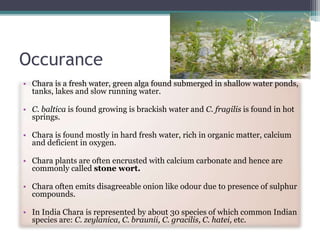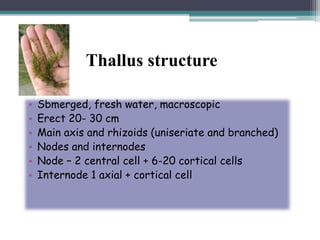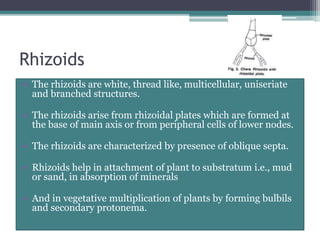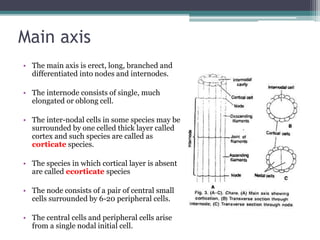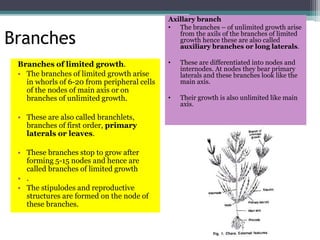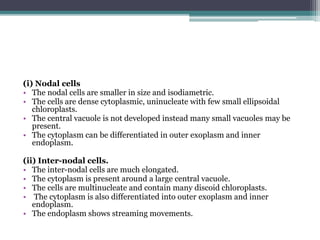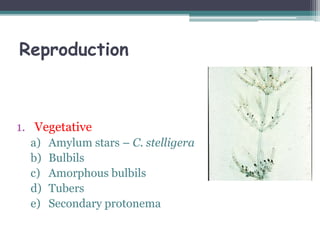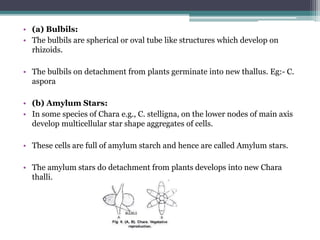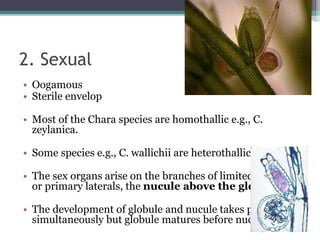This document summarizes key details about the freshwater green alga Chara. It describes the order, common species, occurrence in freshwater ponds and lakes, thallus structure including main axis, nodes, branches, rhizoids, and cell structure. Reproduction is both vegetative through structures like bulbils and sexually through oogamous fertilization. Chara has economic importance as food for aquatic animals, in purifying water, as green manure, and used dried as an insect repellent.


